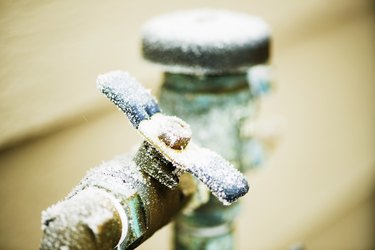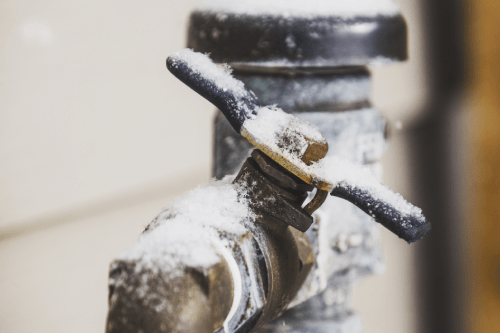Prevent Frozen Pipes in Winter: Pro Tips
Prevent Frozen Pipes in Winter: Pro Tips
Blog Article
Here down the page you can find lots of extremely good details in relation to How to prepare your home plumbing for winter weather.

Cold weather can wreak havoc on your pipes, specifically by freezing pipelines. Below's exactly how to avoid it from occurring and what to do if it does.
Introduction
As temperatures drop, the threat of icy pipes rises, potentially leading to costly repairs and water damages. Understanding exactly how to prevent icy pipelines is critical for home owners in chilly environments.
Avoidance Tips
Insulating prone pipelines
Wrap pipelines in insulation sleeves or utilize warm tape to protect them from freezing temperature levels. Focus on pipes in unheated or external areas of the home.
Heating strategies
Keep interior rooms appropriately heated, particularly locations with pipes. Open up cabinet doors to allow warm air to distribute around pipes under sinks.
Exactly how to recognize icy pipelines
Seek lowered water circulation from taps, uncommon smells or sounds from pipelines, and visible frost on subjected pipelines.
Long-Term Solutions
Architectural modifications
Think about rerouting pipes away from outside walls or unheated areas. Include additional insulation to attics, cellars, and crawl spaces.
Updating insulation
Invest in top quality insulation for pipelines, attic rooms, and wall surfaces. Appropriate insulation aids keep regular temperature levels and lowers the threat of icy pipelines.
Securing Exterior Plumbing
Yard hoses and exterior faucets
Separate and drain pipes yard hose pipes before wintertime. Install frost-proof spigots or cover outdoor taps with protected caps.
Understanding Frozen Pipelines
What triggers pipes to ice up?
Pipes ice up when subjected to temperatures listed below 32 ° F (0 ° C) for extended periods. As water inside the pipelines freezes, it broadens, taxing the pipe wall surfaces and potentially creating them to break.
Dangers and problems
Frozen pipes can lead to water interruptions, home damages, and expensive repair work. Burst pipelines can flooding homes and cause comprehensive architectural damage.
Indications of Frozen Piping
Identifying icy pipelines early can stop them from rupturing.
What to Do If Your Pipelines Freeze
Immediate actions to take
If you think frozen pipes, keep faucets open to alleviate pressure as the ice thaws. Make use of a hairdryer or towels soaked in warm water to thaw pipes slowly.
Final thought
Avoiding icy pipes requires aggressive steps and fast feedbacks. By understanding the causes, indications, and safety nets, house owners can safeguard their plumbing during winter.
6 Proven Ways to Prevent Frozen Pipes and Protect Your Home
Disconnect and Drain Garden Hoses
Before winter arrives, start by disconnecting your garden hoses and draining any remaining water. Close the shut-off valves that supply outdoor hose bibs and leave the outdoor faucet open to allow any residual water to drain. For extra protection, consider using faucet covers throughout the colder months. It’s also important to drain water from any sprinkler supply lines following the manufacturer’s directions.
Insulate Exposed Pipes
Insulating your pipes is an effective way to prevent freezing. Pipe insulation is readily available at home improvement stores and is relatively inexpensive. Pay close attention to pipes in unheated areas such as the attic, basement, crawl spaces, or garage. Apply foam insulation generously to create a buffer against the cold. You can also wrap your pipes in heat tape or thermostat-controlled heat cables for added warmth.
Seal Air Leaks
Inspect your home for any cracks or openings that could let in cold air. Seal any holes around the piping in interior or exterior walls, as well as the sill plates where your home rests on its foundation. Additionally, make sure to keep your garage door closed unless you’re entering or exiting. Leaving it open creates a significant air leak that can lead to frozen pipes.
Allow Warm Air Circulation
During cold snaps, it’s essential to allow warm air to circulate evenly throughout your home. Leave interior doors ajar to promote better airflow. Open kitchen and bathroom cabinets to help distribute heat consistently around the rooms. If you have small children or pets, be sure to remove any household chemicals or potentially harmful cleaners from open cabinets for safety.
Let Faucets Drip
A small trickle of water can make a big difference in preventing ice formation inside your pipes. When temperatures drop significantly, start a drip of water from all faucets served by exposed pipes. This continuous flow helps prevent the water from freezing. Additionally, running a few faucets slightly can relieve pressure inside the pipes, reducing the chances of a rupture if the water inside does freeze.
https://choateshvac.com/6-proven-ways-to-prevent-frozen-pipes-and-protect-your-home/

As an avid person who reads about How to prepare your home plumbing for winter weather, I assumed sharing that segment was a smart idea. You should pause to distribute this article if you enjoyed it. Thank-you for going through it.
Click Here Report this page